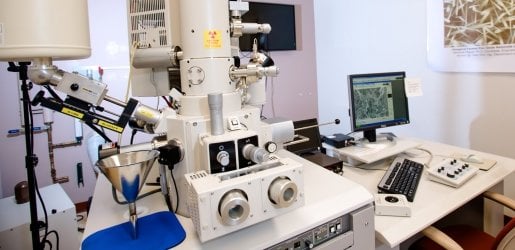Instrument Details
The Hitachi S-4700 FE-SEM is a cold field emission high resolution scanning electron microscope. This SEM permits ultra high resolution imaging of thin films and semi-conductor materials on exceptionally clean specimens. It is also suitable for polymeric materials. The S-4700 is configured to detect secondary and backscattered electrons as well as characteristic X-rays. The system is fully automated and is operated via easy-to-use menu driven software.
Capabilities
- Accelerating Voltages from 1–30 kV
- Everhar-Thornley secondary electron detector
- Retractable Robinson backscattered electron detector
- Through-the-lens secondary electron detector
Vendor
4pi Analysis, Inc. engineers and sells X-ray Microanalysis and Digital Imaging Systems. (NOTE: 4pi has ceased manufacturing and sales. ACMAL is confident that this will not affect 4pi’s ability to provide technical support to this lab.)
Training
eTraining
Free online eTraining is available for this instrument. This self-paced tutorial and reference content does not replace course requirements for authorized usage.
